GNZ Newsletter June 2025

From the president

Welcome to the June 2025 GNZ newsletter.
The sun is now sitting much lower in the sky.
In many of the photos from May you can see the sun dipping lower.
The days are shorter.
Indeed we are only 21 days away from the shortest day of the year.
The days are colder.
Yet winter has only just begun.
This however does not mean the end of the fun.
Winter winds blow strong.
There will be ridge and wave to help you along.
Lot's of training flights to be done.
AGM's to celebrate.
Always a reason to go gliding or talk gliding.
Steve Wallace
GNZ President
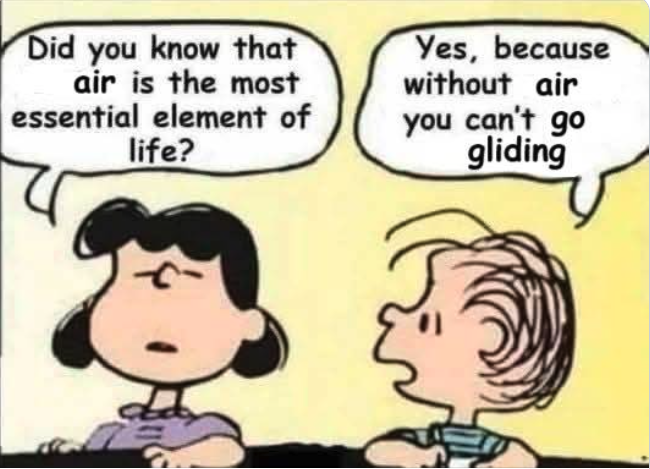
Congratulations
CHARLIE IRVIN
C Cat instructor training complete. Well done Charlie!

GEOFF THOMPSON
Back seat rating done.
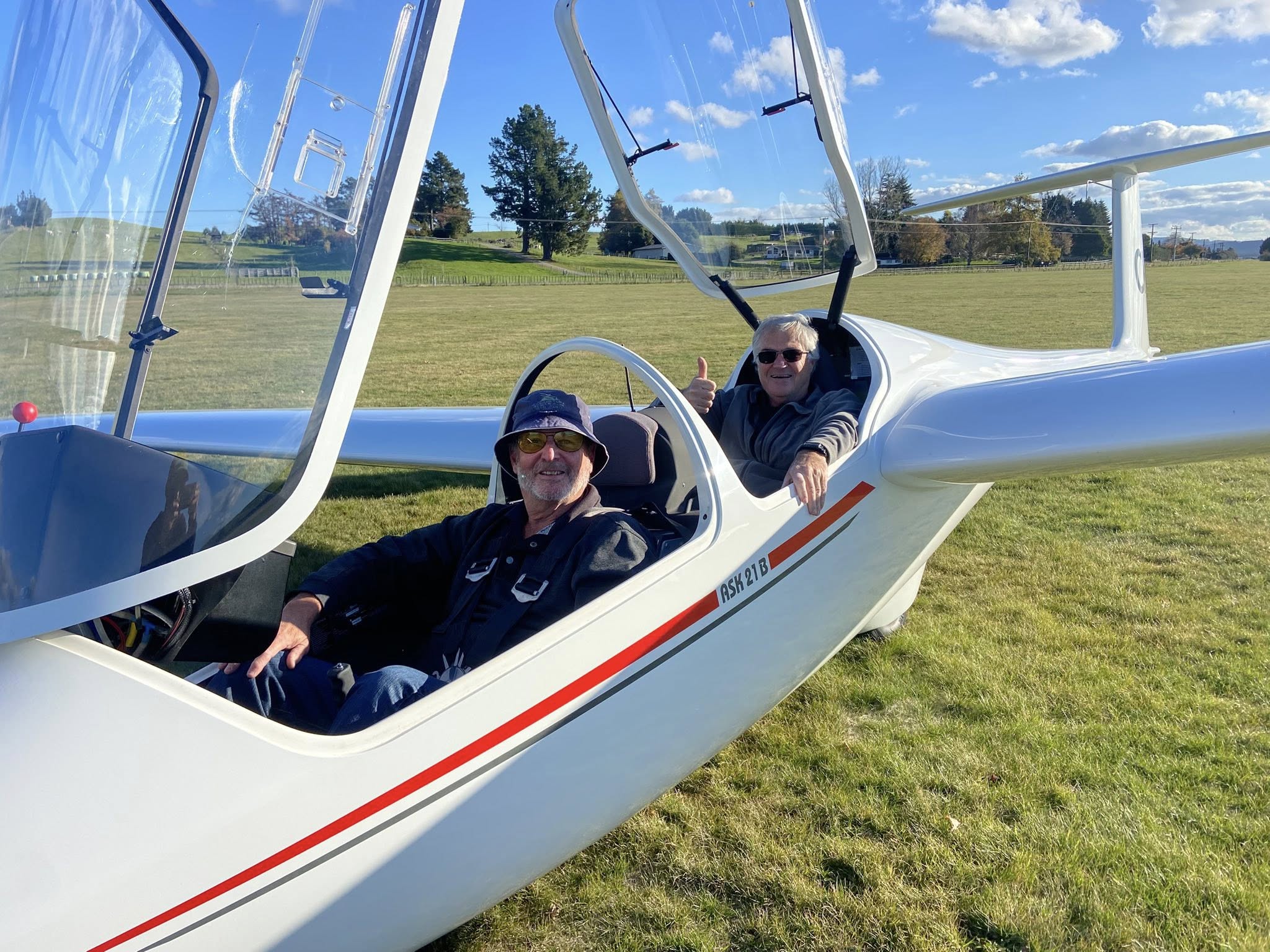
HAGEN BRUGGEMANN
First single seat type rating.
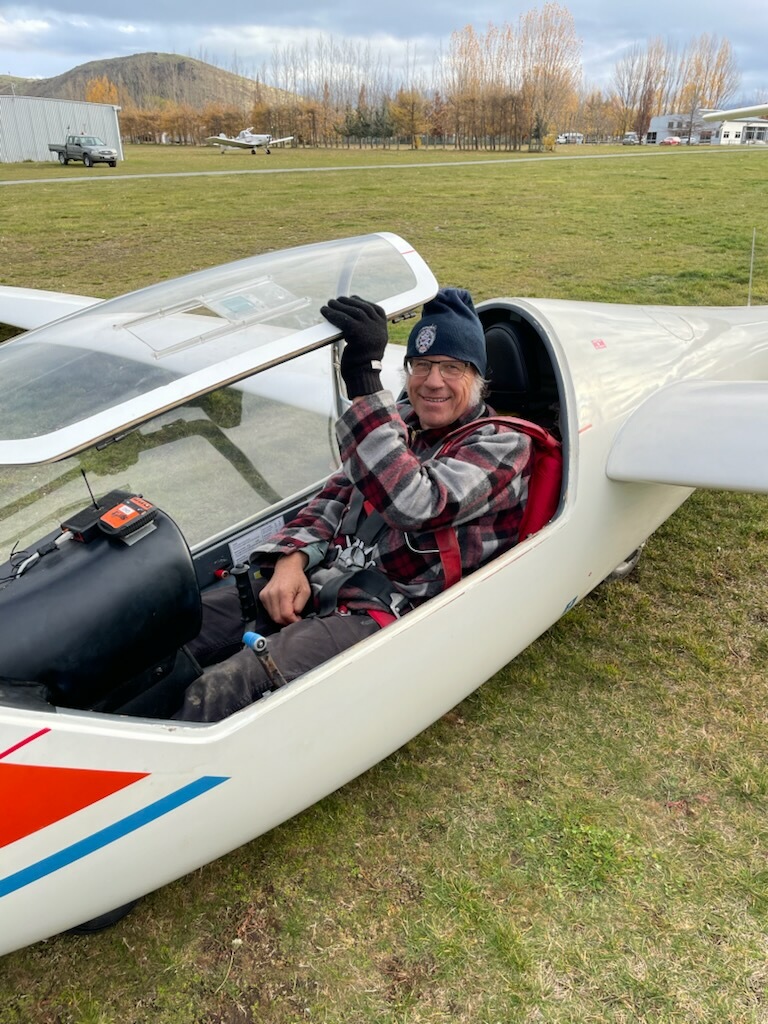
Last chance to buy tickets
75th Anniversary Gala Dinner
Photo is
"Preparing dinner, Waharoa 1956. Merv North, Roy Kemp, Gordon Hookings, Jock Menzies"
75th Anniversary Gala Dinner
Come celebrate with us, 75 years of Gliding New Zealand and 116 years of New Zealand gliding history!
Saturday June 14th, 2025
Last chance to buy a ticket!
Final numbers must be with the venue by COB June 2nd!
WHERE: Royal New Zealand Yacht Squadron Ballroom, 181 Westhaven Drive, Westhaven Marina
WHEN: Saturday evening, June 14th.
- 6.00pm - 7.00pm: arrive for pre-dinner drinks and canapés in the Dinghy Locker bar.
- 7.00pm - 7.30pm: All guest to be seated in the Ballroom. GNZ Awards.
- 7.30pm - 10.00pm: Dinner, dessert and formal entertainment between meal service - (six guest speakers with incredible stories from the past - the people, the passion, the flights)
- 10.00pm - Midnight: Post dinner socialising for those that want to hang around and talk.
PARKING: Plenty of free public parking available between the white lines (yellow lines for Squadron members only)
THEME: Dress in your best 1950's dinner attire
PRICE: Ticket price is $95 per person
HOW TO PURCHASE: Direct Deposit into bank account:
02 0568 0304955 000 GLIDING N Z INCORPORATED
Use reference "Gala Dinner" and name of attendees as the particulars.



NZGA letterhead designed in recognition of Dick Georgeson, Dave Speight & Bruce Drake after they set a World Goal and Free Distance record of 1,254 km in New Zealand in 1978 flying 3 x Nimbus-2 gliders
GNZ AGM & SYMPOSIUM
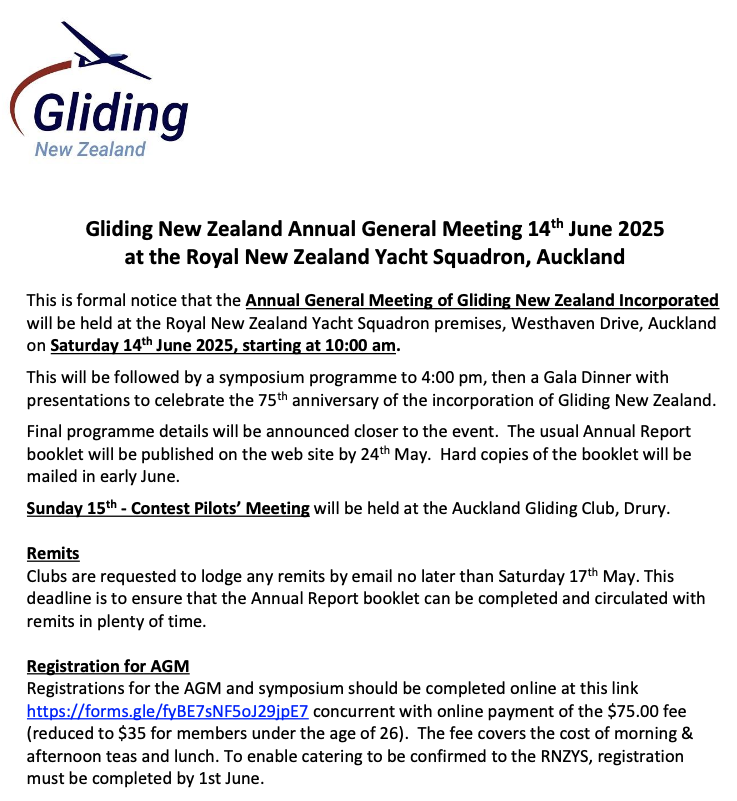
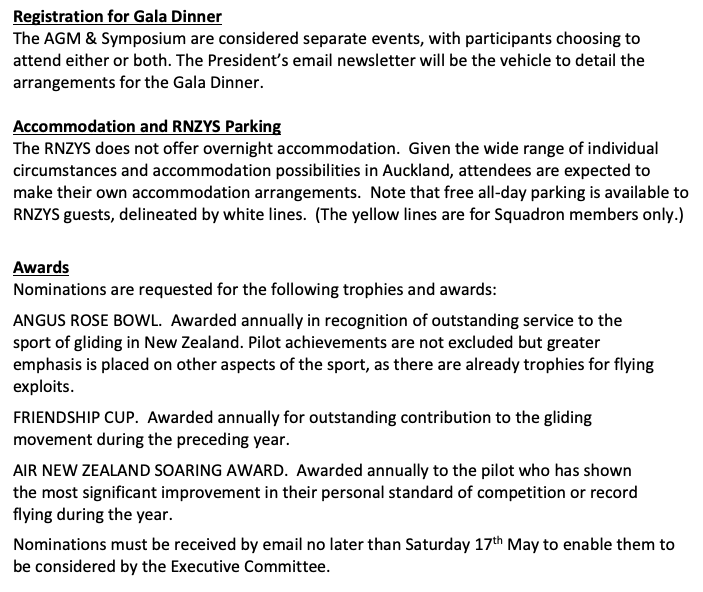

Reflections on Gliding
by Justin Wills
Reflections On Gliding

Justin Wills
Interview by Rod Stuart
I recently had the pleasure of interviewing renowned glider pilot Justin Wills. He was sitting at his home in Omarama with his wife Gillian. Justin has had some extraordinary flights this season and I wanted to find out more about some of them. What followed was a delightful two hours where Justin shared some of his thoughts about gliding, and his aspirations for the future of our beautiful sport.
In addition to his high performance gliding, Justin is well known by his vintage gliding friends for his ownership of one of the three original Rhönbussard gliders left flying in the world. He inherited this glider from his older brother Christopher Wills who founded the Vintage Glider Club in 1973. Like Chris, Justin feels passionately that these historic gliders should be actively flying – preferably cross country! I was given a very brief history of how gliding started in Germany and after searching on Google I realise it was just the tip of the iceberg.
In the 1920s a group of gliding enthusiasts started flying wood and fabric gliders from the Wasserkuppe in the Rhön district. A local furniture maker named Alexander Schleicher was kept busy repairing these gliders and this soon became his main business. Over the years he employed the services of several glider designers: Gerhart Waibel designed the ASW gliders. (Alexander Schleicher Waibel). Rudolf Kaiser designed the ASK gliders. (Alexander Schleicher Kaiser). Hans Jacobs designed the Rhönbussard and later engineer Eugen Hanle from Stuttgart introduced fiberglass into the design mix. His skills were honed by building wind turbine blades, and he formed the company Glasflugel.
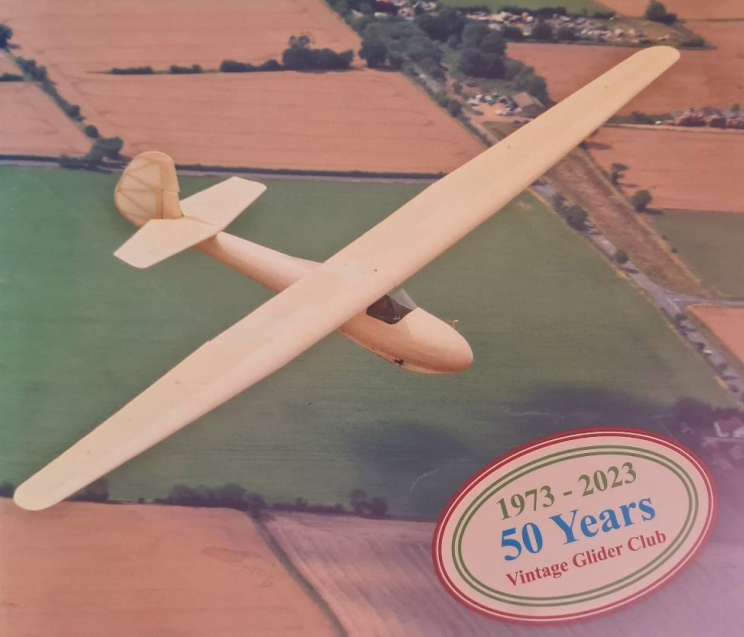
Justin’s Rhönbussard featured on the front page of The English Vintage Glider Club 50 year issue.
1) 1200kms to Taupo:
With Leo Davies in the front seat and Justin in the back, Duo Discus Romeo Whiskey flew 1200km. They first flew south to Fraser Dam near Alexandra and then headed North in wave - Justin was quite pleased to pioneer a new route across Cook Straight. They flew out to sea heading due north, well west of the usual flight path to the North Island. They crabbed off the end of a beautiful wave, ending up over 100kms from the nearest coastline. At 26,000’ they turned down wind in relatively low sink, crossing the west coast of the North Island just south of Wanganui. In the lee of the Ruahinies, wave was marked by a ‘tremendous’ lenticular. They climbed from 10,000’ to 21,000’ and flew on, reaching Taupo at 12,000’ and continued north. Having greatly underestimated the day Justin thinks they could have flown further north to the tip of the Coromandel, but having arranged to land at Taupo, and with 1200kms in behind them, they headed back and were greeted at the Taupo Gliding Club by Trevor Terry and Suzanne.
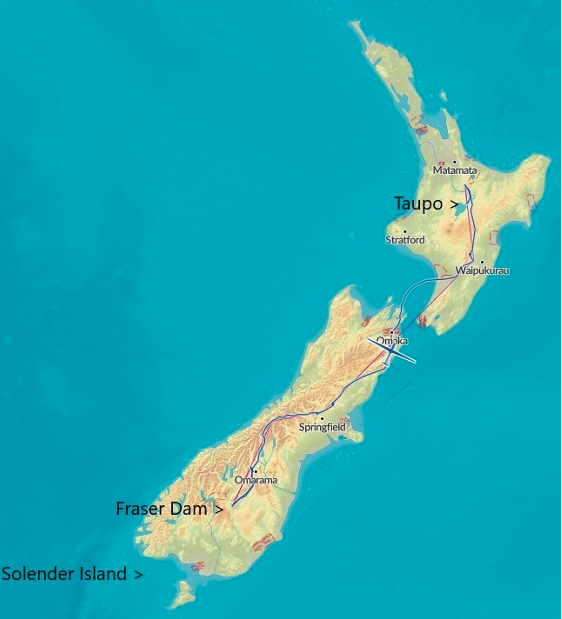
Justin's 1,200km flight showing the northerly track taken to fly from the South Island to the North Island. For the next story note where Solander island is located.
2) Solander Island:
The OGC recently had a weekend of flying in Fiordland. They based themselves in Manapouri and enjoyed some stunning flying in light wave. With Bob McCormack from Temora, Australia in the front seat and Justin in the back, Romeo Whiskey headed 45kms off the south coast of the South Island to Solander Island. They arrived at over 16,000’ and took a picture. I asked Justin why, and he replied “because it was there!” Solander Island was named after a Swedish naturalist, Daniel Solander, Captain Cook’s botanist.

Solander Island 45kms off the south coast of the South Island
3) Landout, venison stew, snow and a helicopter rescue:
I asked Justin, (78) if he is considering doing less gliding. “NO! I am always looking to learn more!” came the reply. “I have been a little introspective about my flying recently. 4 of my last 6 flights have ended in excitement!” Three landouts and a cockpit fire in Hadleigh Bognuda’s Arcus M. The cause? Shorted battery wires under the back seat which nearly burnt through a fuel line. “A very quick decent with smoke filling the cockpit! Hadleigh did a superb job of getting us home where the canopy was opened and fire extinguishers used”.
Landing out at the Upper Hawkduns proved to be as dramatic. Justin was flying his Antares 18, with the goal to fly 1,500 kms to Omaka. There was a building southerly system and just north of Rangitata a request for clearance was declined by Christchurch air traffic control due to busy traffic. Justin decided to turn back to Omarama. However, the weather was deteriorating fast over the Hawkduns. Thinking he might be able to sneak in to Alexandra airport Justin he soon found himself in 14knot sink with only one landing possibility - the Upper Hawkduns or ‘Piano’ strip. He landed safely, uphill, with a difficult crosswind with weather and visibility fast closing in having covered 1200 kms. Realising a retrieve would not be feasible, he prepared himself for a night in the cockpit. After a while, and much to his relief, four stag hunters arrived in a Polaris. They drove him to a hut 3kms away where he was treated to venison stew and a warm night in a bunk in front of a fire. One of the hunters was CEO of Garmin NZ, so communication was enabled.
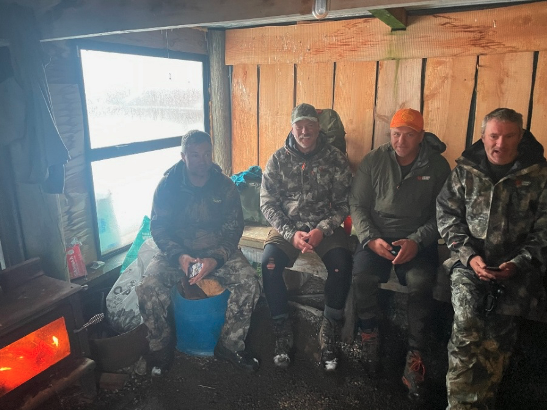
It was decided that Milan and Gillian would drive over for a retrieve the next morning. It snowed overnight and Justins glider looked like an ice block!

While derigging the glider, Justin lost his footing on a grader berm and fell on his back. A loud ‘CRACK’ left him immobile on the cold ground while a rescue helicopter was arranged. 55 minutes later the chopper arrived with two crew. Justin cannot speak highly enough about the NZ culture of helping others competently. After a 25 minute flight Justin was unloaded onto the rooftop of Dunedin hospital and whisked to the Emergency Department. Gillian flew to the hospital with Justin while Millan completed derigging and heroically driving out in serious mud, slush and snow. Justin is now sporting a back and neck brace and is recovering well. His visit to the northern hemisphere has been delayed this year but X-Rays are proving positive and he hopes to be travelling within a few weeks.
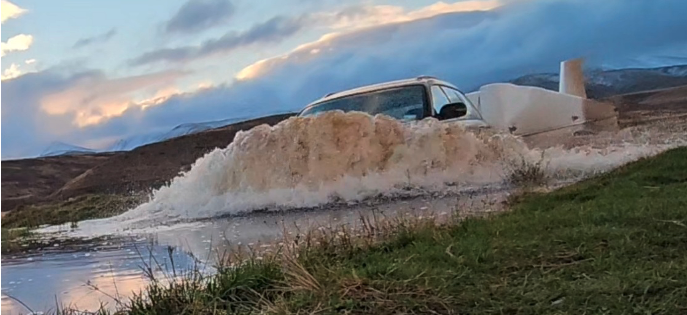
Aspirations for the future of gliding:
The interview ended with Justin reflecting on the future of gliding as a sport.
“Gliding is a very new sport. It is about developing a relationship with the air. Air seems to have no real substance or mass and therefore we find it hard to relate to. But in reality, air has mass, energy and forces of unfathomable scale. We are still learning how to exploit these forces. We all need adventure, contact with others and an interest. Gliding serves these needs perfectly. Gliders keep getting better and our frontiers keep expanding. Gliding has an exciting future!”
From around the clubs
Scenic flying from Whenuapai. Centre far distance you can see the Manukau Harbour (Tasman Ocean water) seperated from the Waitemata Harbour (Pacific Ocean water) by only 5km.

Auckland Gliding Club, Grant Smith flying with the birds in the month of May.

Charlie snaps a photo of her glider, the mighty NV, at Piako.
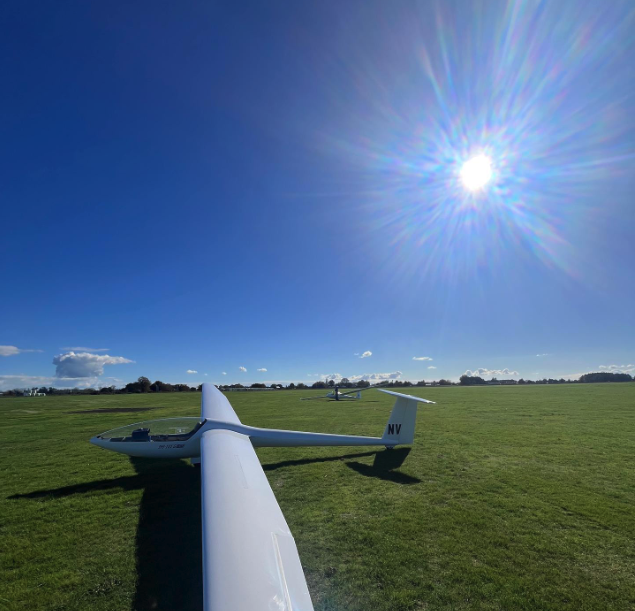
Tauranga's resident aviation photographer just keeps taking great photos

Lovely day for Mother's Day flying at Taupo
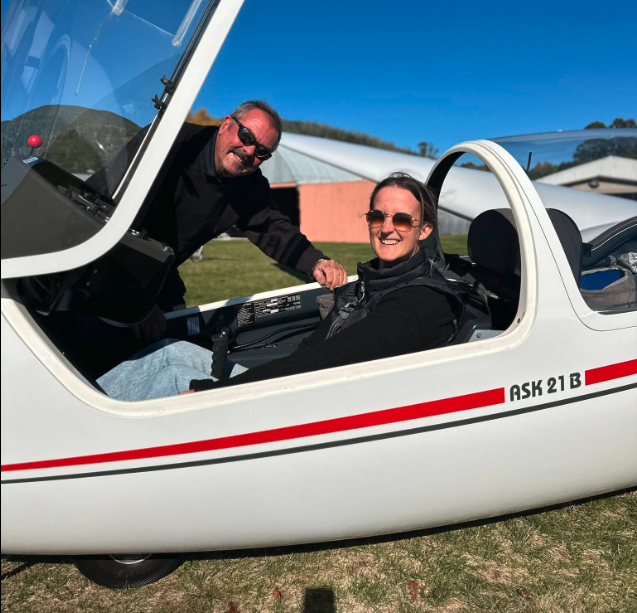
Friday avo flying with students from Stratford High School at Taranaki G.C.

Wellington / Wairarapa - Conal heading home from 11,600' overhead Palliser Bay
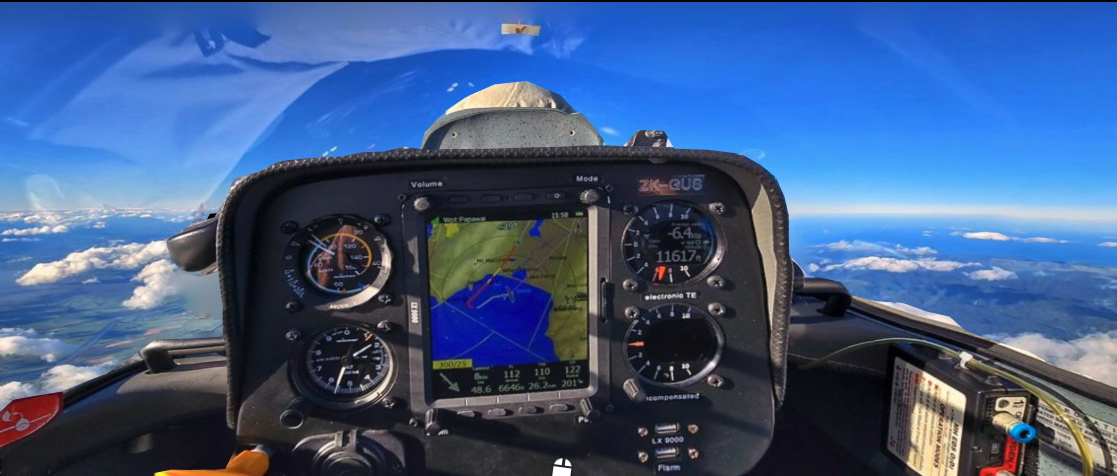
Mike Strathern from Nelson Gliding Club on his way to represent New Zealand in the Club Class at the World Glding Champs in Tabor, Czech Republic, June 7th - 21st, 2025.
Follow Mike on his FB Page: https://www.facebook.com/michael.strathern
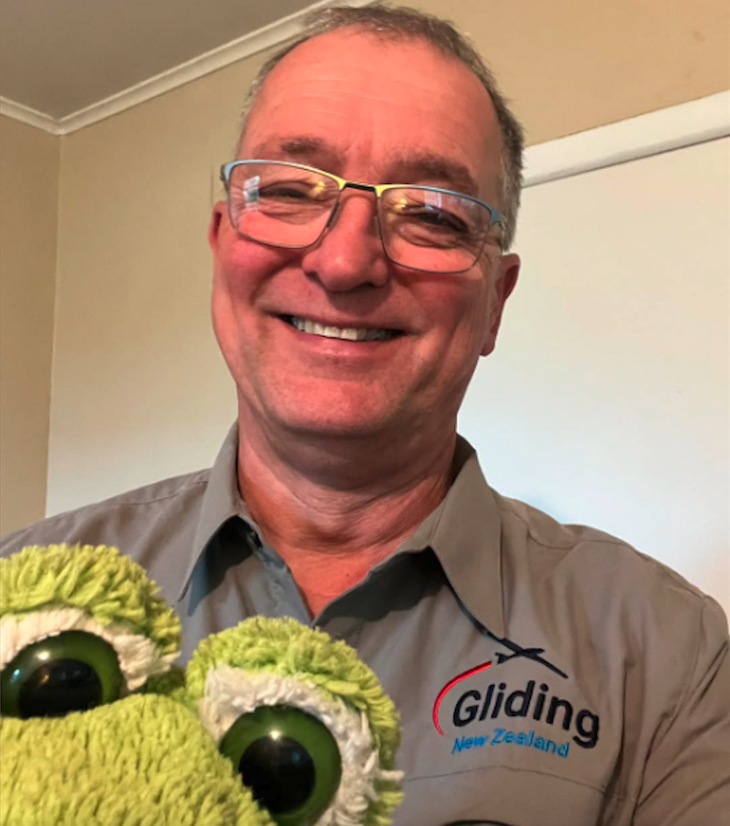
Gerard snaps a pic of the Omarama Duo from the ASH 25
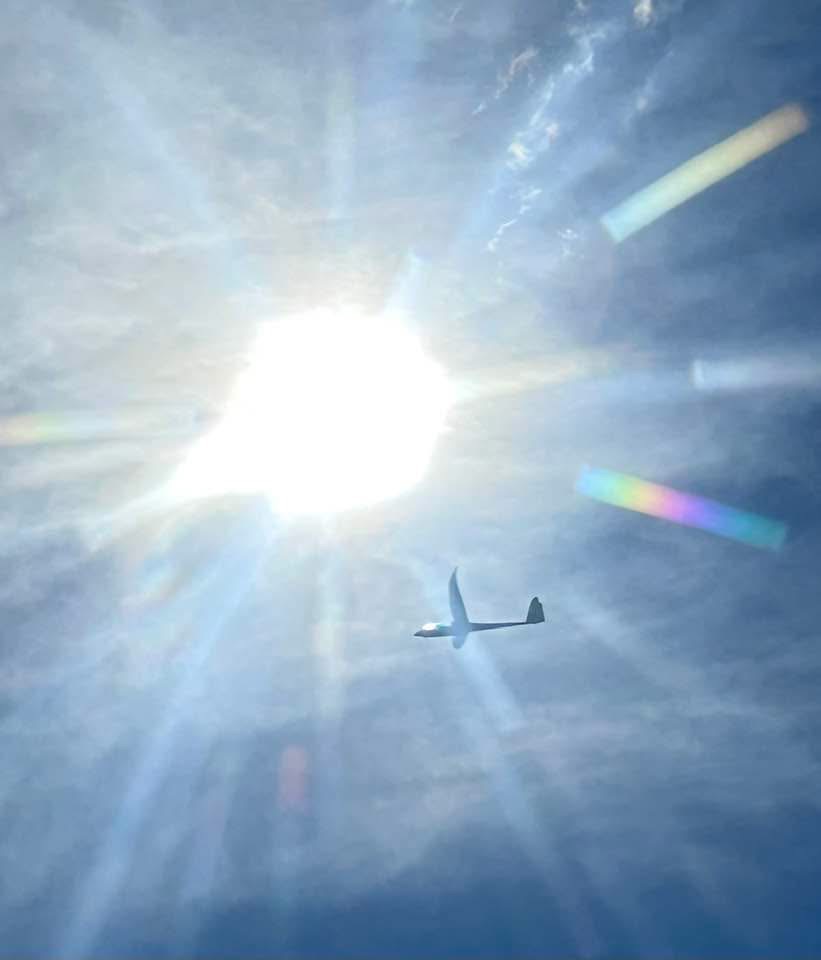
Griz flying blind in the back seat of the Duo on his way to Mt Cook

Autumn flying over Black Peak, Omarama
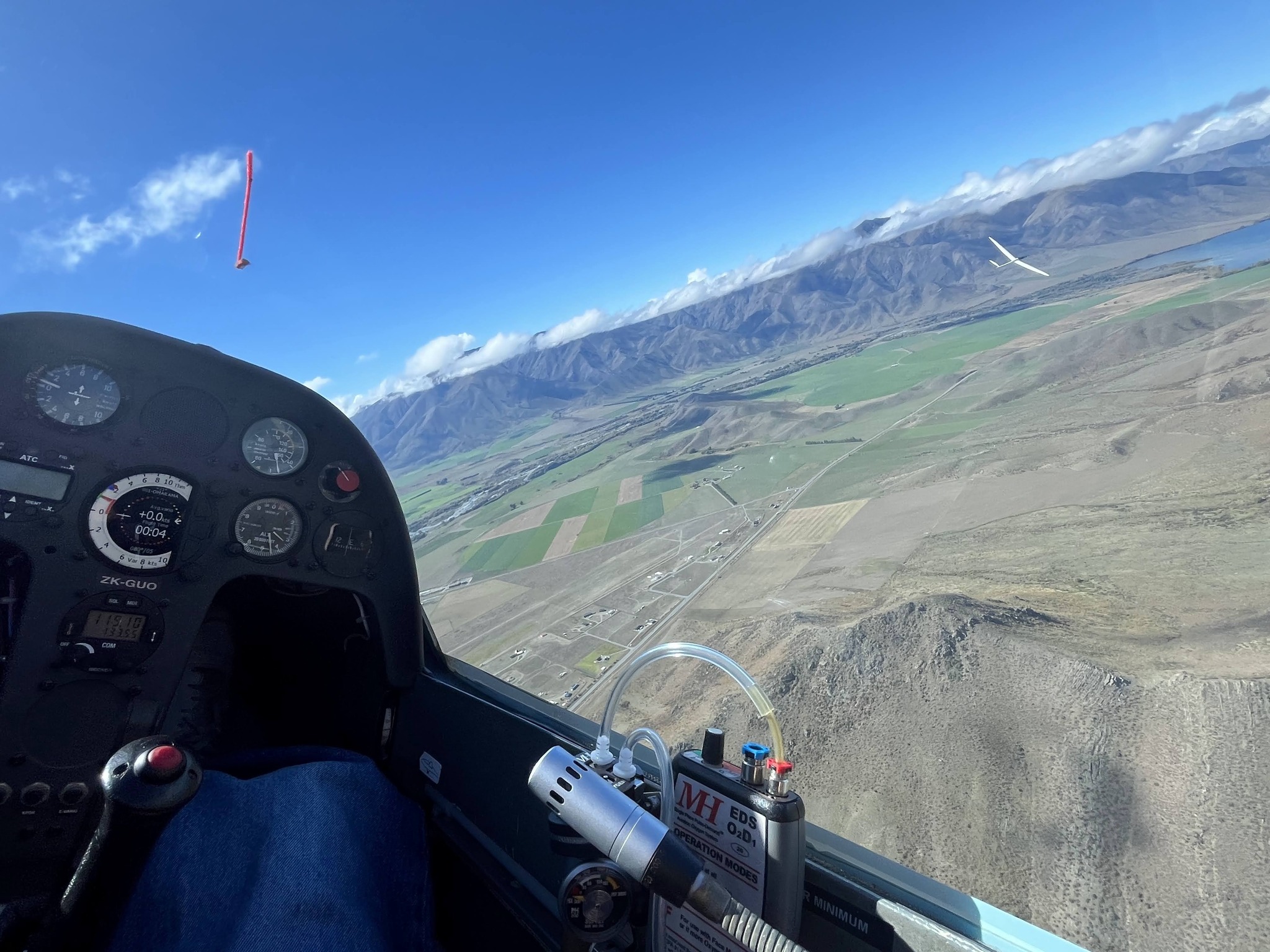
YGNZ AGM at Omarama (ZK-GAB) hangs above.

ZK-GAB, 73 years earlier being prepared for a height gain by Dick Georgeson from Sawdon Station
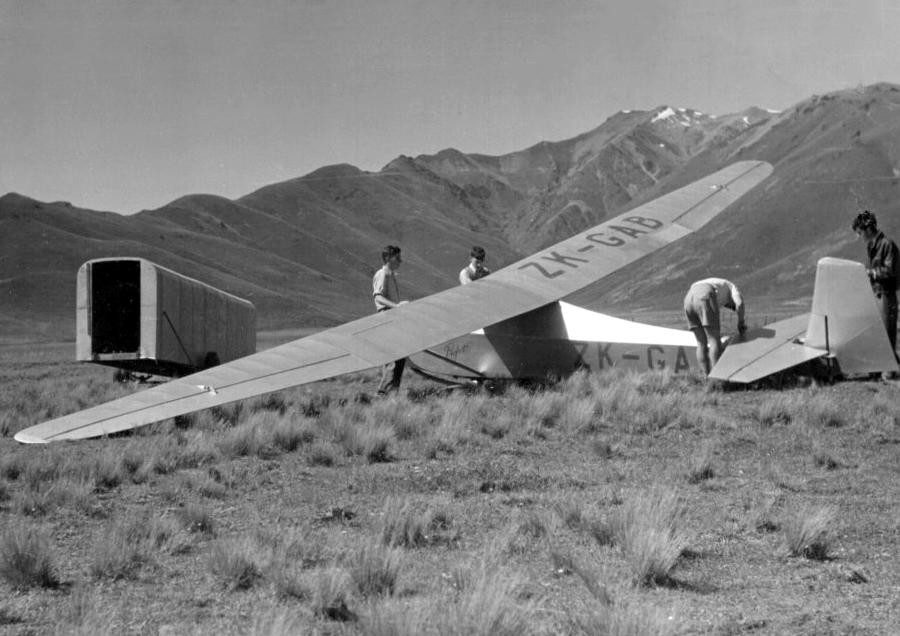
Classic Flyers Museum
While the norm is for clubs to pride themselves in having their gliders active, Vintage Kiwi prides itself in having a large fleet of static gliders; some saved from the scrap heap or bon fire to become part of the Vintage Kiwi Collection, at the Classic Flyers Aviation Museum.
We do have our K-13, GFX, earning money but we have also made progress for retired gliders as well. Thankfully we have a great relationship with Classic Flyers Museum on Tauranga Airport which affords us the opportunity to look after some gliders with a great history. The gliders are generally donated to the Vintage Kiwi organisation by their owners or estate, the exception being the ULF -1 foot launcher. Vintage Kiwi then passed them on to the museum, if accepted, to be part of their permanent aircraft display. All the gliders have a great story to tell.
In the main hangar is the Tauranga Gliding Club’s very first glider, Slingsby T-31 GAU, built from a kitset in 1954 and last flown as recently as 2016, at Inglewood.

Nearby is Slingsby Swallow, GCD, “Great Charlie Duck” so named for its landing in Lake Wakatipu on 12 January 1977. That story will be recounted in greater detail in the coffee table book currently being produced by a team of six, covering New Zealand Gliding history from 1909 till 2025.
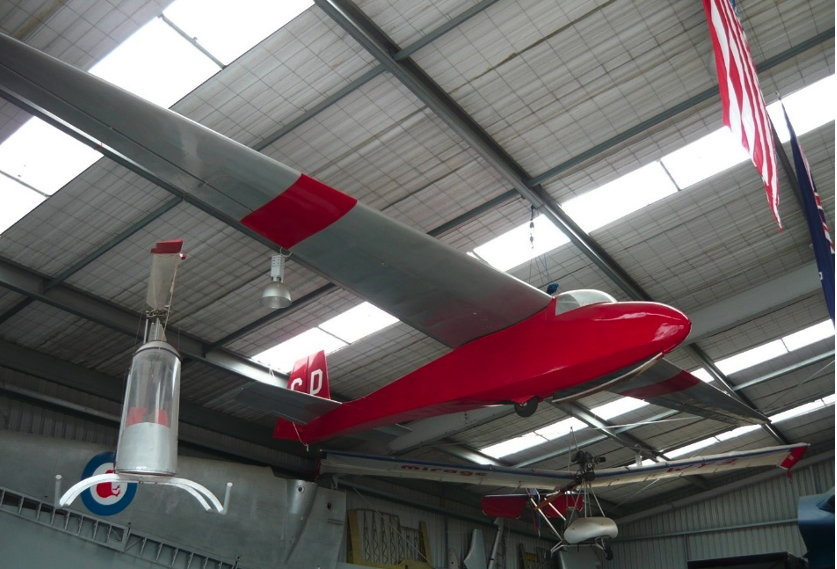
Also in the main hangar is an unregistered Ulf-1, which was being constructed from a kitset. Sadly, the builder, Ken Dumper of Auckland, died before its completion. His widow has kindly lent the glider frame to Classic Flyers, since 2006, on the proviso it be retained untouched.

Two doors along is Ann Johnson’s K6Cr GFD “Fido”, rebuilt as a museum exhibit by Vintage Kiwi, in which she set 18 of her 21 New Zealand records. Quite a feat for anyone. (Ann in the photo).

With GFD is Hall Cherokee GBT, which was destined for a Guy Fawke’s night disposal. Those of us (including me and Pat Driessen) who have flown GBT have our own opinions on its performance but with it being the first glider built in New Zealand entirely from plans, much to CAA’s consternation, it does have a right to survive.
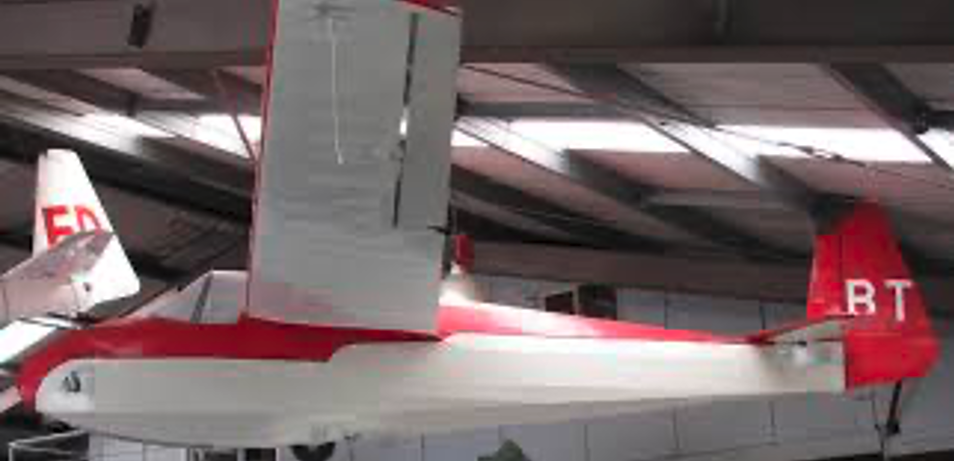
Next door is Stuart Rogers’ Duster, GSR, probably the most successful New Zealand example. These days it looks down on a Stearman, a Harvard and a Yak. become airworthy once again.

Next month we will go cross country to explore other gliders in Vintage Kiwi’s sights.
Peter Layne
Membership
Membership Display Panel
The up is getting pretty weak now. Just a one knot weak winter thermal to keep us up at our summer heights. Net gain for the year though of almost 70 new members so lets hope this sees us through until summer. No reason why we can't go up in winter. It has just never happened in the past before. I'm looking for ideas on how we can change this though. The GNZ AGM is a great forum for all clubs to put forward their ideas. If you have a great idea, please forward it to your club rep that is attending the AGM or even better, attend the AGM yourself. Always so much to learn when the clubs from around the country, all get together in one room to share ideas and experiences.
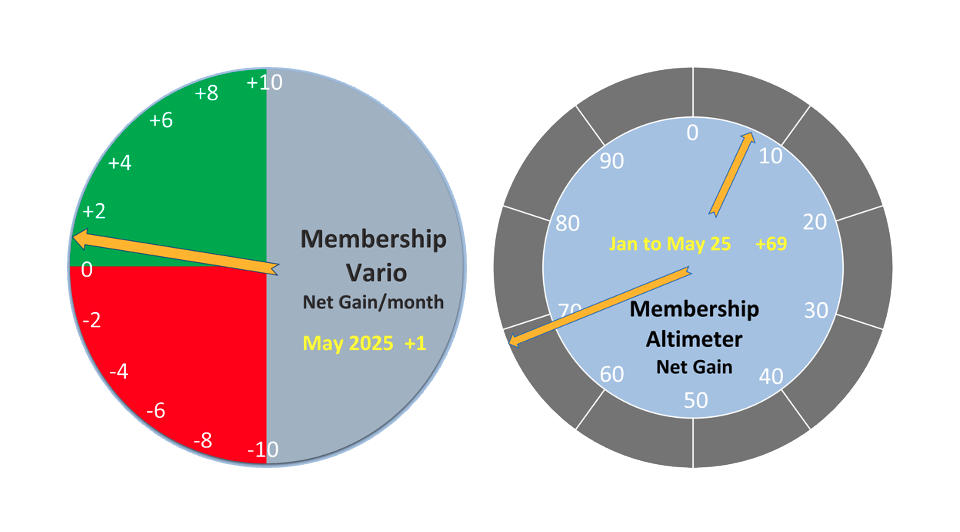
Awards Officer Annual Report
by Bruno Tagliapietra

FAI Badges
During the past year, the Awards Officer has processed 15 claim forms, only 1 of which ended up in unsuccessful applications.
This resulted in a total of 1 silver badge, 1 gold badge, 3 diamond goals and 1 diamond distance being recognised, plus 6 “badge legs” (i.e. silver distance).
Noteworthy FAI Achievements
FAI keeps a sort of “hall of fame” web pages for certain achievements.
David “Dave” Johnson has been added to the “3 diamonds” page: https://www.fai.org/page/igc-badges-3-diamonds
Michael Strathern is in the process of being added to the “750 km” page:
https://www.fai.org/page/igc-750km-badges
Two new NZ Records
On the 24th Nov 2024 Murray Wardell got the new “Speed over an Out and Return Course of 100 km” NZ record for the D13 class, with 117.15 kph.
On the 13th Feb 2025 Ross Gaddes got the “Free triangle distance” NZ record of 505.8 km for the D15 class.
All NZ Records are available at this address:
https://gliding.co.nz/pilots/badges-records/new-zealand-records/
Six new Official Observers
We appointed 6 new official observers last year: they all prepared using a self-paced training system based on assignments, and then sat the exam under the supervision of their CFI.
6 new OOs help a bit, of course, however there still are some clubs with no official observers.
No official observer => no badges, no records.
Any member of Gliding New Zealand can become an OO: if you are interested, send me an email at awards@gliding.co.nz.
General Notes
Ensure you keep up to date:
When making an application, please ensure that you are using the latest form.
The OPS 04 Forms can be downloaded from GNZ’s website.
https://gliding.co.nz/pilots/pilot-resources/operational-forms/
Do not download the PDF files directly from the result of a Google search: chances are that Google will return an outdated version.
The same is true for the FAI rules: download them, periodically or when you need them, directly from the FAI IGC website page:
https://www.fai.org/igc-documents
The rules are international, valid worldwide from the date they are published, and they change every year, to some extent.
The “Sporting Code Section 3” is especially important to understand, before attempting badge flights.
It could be a good idea to designate a “champion”, in each club, probably an OO, whose role is to keep up to date with it.
Because of how the document is structured, a background in law, or math, could be helpful, but at the end of the day, it is just a fairly short document written in plain English: if I (non-native speaker) understand it, it shouldn’t be too hard to find someone in your club who can understand it well too.
Bruno Tagliapietra
GNZ Awards Officer
+64226441495 (Whatsapp / Telegram only)
awards@gliding.co.nz
Winter Maintenance
From the desk of the NAO

Engineers Renewals: A reminder to those Engineers whose ratings are up for renewal next month to forward your applications to me if you intend on renewing.
Winter is on the way, time to plan your gliders winter maintenance requirements, I suggest contacting your engineer and making your arrangements early, don't be the one to leave it all until November when the soaring conditions arrive, if your aircraft happens to required extra maintenance or replacement items better to be dealing with that during the winter months rather than trying to sort it at the end of the year when things always get more difficult..
For those of you who would like to know more about your responsibilities or be more involved in your glider maintenance talk with your engineer there is a useful Airworthiness Circular available on the GNZ website, link is below.
https://gliding.co.nz/wp-content/uploads/currentdoc/AC3-15.pdf
A few items where your glider may require attention this year.
Oxygen Systems:Cylinders and regulators due for service or testing?The below Airworthiness Circular has a good amount of information regarding this and use of the systems.https://gliding.co.nz/wp-content/uploads/currentdoc/AC3-07.pdf
The following cylinder information has been provided by Mountain High (via Joe Aerts) and is relevant to a lot of glider oxygen systems.
Cylinder type:
AL, (Aluminum cylinders), need hydro testing done once every 5 years and do not expire as long as they pass testing.
CFF-480, (Glass Fiber Filament Composite), need to be hydro tested once every 3 years and have a 15 year life limit.
CFFC, (Carbon Fiber Filament Composite), need hydro testing once every 5 years and have a 15 year life limit.
KF, (Kevlar Fiber Filament composite), need hydro testing once every 5 years and have a 15 year life limit.
On all cylinders, testing intervals start from the date of manufacture which is on the cylinder.
Pilot Harness set:Require replacement or re- webbing every 12 years, this is specified in the GNZ TC 22 maintenance Schedule which your glider is maintained to, for gliders from approx 1980s onwards the Harness sets are a certified life item of 12 years, this is referred to within the gliders documentation, Maintenance Manual etc, for the older aircraft the documentation may not exist or the Maintenance Manuals may not be specific so the TC 22 Schedule confirms the 12 year life limit requirement.
It is quite likely that if a glider is still fitted with the older type harness set which has the sliding over locking lap pin (dating back to the 1970s) these will not be suitable for re-webbing and should have been replaced, if they haven't been they should be.
Wheel brakes:Wheel brake not as effective last season? Report this to your engineer as it is not always possible to test the effectiveness of these in a workshop environment. Probably time for a service, fit new brake shoes or pads, the pads become hard and glazed with time making them less effective, change of the fluid in the hydraulic systems or replacements of the operating cables in the drum brake systems.
Polishing:Planning in polishing your glider? Stay away from the silicon / teflon based type polished, these can make any future painting/gelcoating works problematic, typical polishing creams are the way to go, check with your engineer if you are seeking any "how to" advice.
Feel free to contact me if you are seeking any advice.
Regards
Jason Shields
GNZ National Airworthiness Officer
021962269
Task Pilot
Some of you noticed that Task Pilot stopped working last month. Some of you may not even be aware that GNZ has an amazing tasking resource for clubs to use known as Task Pilot.
Firstly, I am pleased to let you know that the creator of Task Pilot, Brian Savage, has advised that the glitch is temporary and with the swapping around of a few servers Task Pilot is again up and running.
Secondly, if your club is not using Task Pilot to help your new cross country pilots get into task flying then you should. The link to Task Pilot is available on the GNZ website (see pic below) or by typing in or clicking on this link: https://gliding.co.nz/taskpilot/
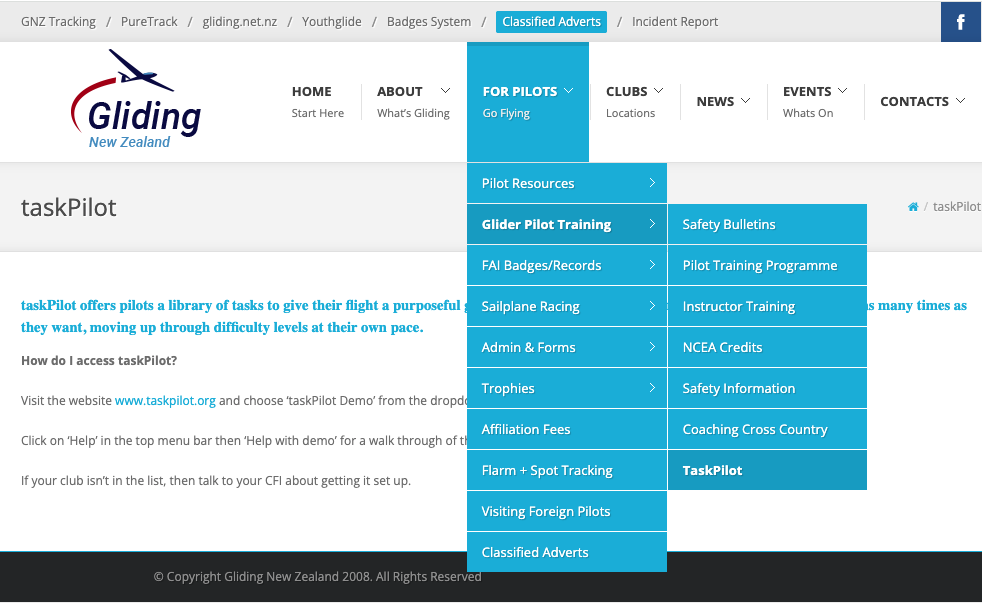
Brian says "People can view the features using the demo club, and clicking the 'Have a look around' button."
Benefits include:
- Clubs can run season long comps - Taupo do this for example.
- For casual comps, it does all the scoring, etc.
- Great visuals when reviewing flights with 3d mapping.
Brian Savage is happy to help clubs with the set up of Task Pilot is needed. You can contact Brian at:
brian.savage@fossicking.co.nz
The Low Slow Turn
Too Low, Too Slow
If one was to summarise the cause of the majority of serious injury and fatal accidents in New Zealand gliding, the answer would be attempting to turn while too low and too slow. This is not just a circuit at home base or outlanding thing, this includes ridge and mountain flying.
How can we check pilots for their understanding of this during a BFR for example? Here is a description of just such an exercise from Ray Burns, CFI of the RNZAF Aviation Sports Club.
The exercise I chose for the pilot to do was the "Recovery from unusual attitudes". As an exercise I think this worked extremely well and I highly recommend it. We briefed it on the ground saying the aim was to recover pointing in a predetermined direction. I positioned us over Harkin Point and pointed the nose at North Shore then raised the nose (not too steeply but steep enough to be clearly about to stall) and passed over control. EXACTLY as expected the pilot initiated the turn way too early with insufficient speed. I took control, discussed that we need to accelerate first and tried again. This time the pilot put the nose down ok but didn't wait for speed to build up before commencing the turn. The third time was good. All in all, a superb exercise.
Incident Reports
We're out of sequence with the Ops Team meetings so next newsletter will contain the May-June incident reports.
You can access all back copies of the Ops Team Talking newsletters.
These have been placed on the Gliding NZ web site under News > Safety Bulletins A link to the GNZ accident & incident reporting form (OPS 10) can be found in the very top menu bar on the GNZ homepage, just to the right of the 'Classified Adverts'. You can now fill this form out on your phone at the airfield, so no excuses.

OPS 10 link: http://gliding.co.nz/wp-content/uploads/2019/06/OPS10v7f.pdf
In the case of an accident, asap please phone: 0508 ACCIDENT (0508 222 433)
NOTE: The OPS 10 form has been renamed and amended to include reporting of accidents as well as incidents – previously it was intended for incidents only.
(A CA005 still needs to be sent to CAA for accidents, but the OPS Team doesn’t require a copy of that now.) Consequential changes have been made to the MOAP and AC 2-08.
GNZ Classifieds
1974 STANDARD CIRRUS ZK-GJN S/No 459G TT4981Hrs with aluminium clad braked trailer.
Instrumentation includes Becker 4201 Radio, Cambridge GPS and L-NAV (pressure transducer version), Flarm mouse with Bluetooth dongle and Terra Transponder / encoder. The elevator and Rudder have been re-finished with PU in 2024 It has oxygen with EDS but has not been upgraded for ADSB. Batteries are 2x 7AH Lithium operated (and charged) in parallel. Annual and RA due 20/10/2025
Trailer is homemade and aluminium clad with hydraulic brakes and LED lights. It has solar powered internal lighting for late retrieves. The base chassis was rebuilt about 6 years ago and fully galvanized Fully road legal with Rego and WoF. Tow out and rigging gear plus a fuse cradle fit within the trailer. Current location is Papawai airfield.
Contact Information
Contact Rod Ruddick
Phone: 0211118240
Price: $ 18,000.00
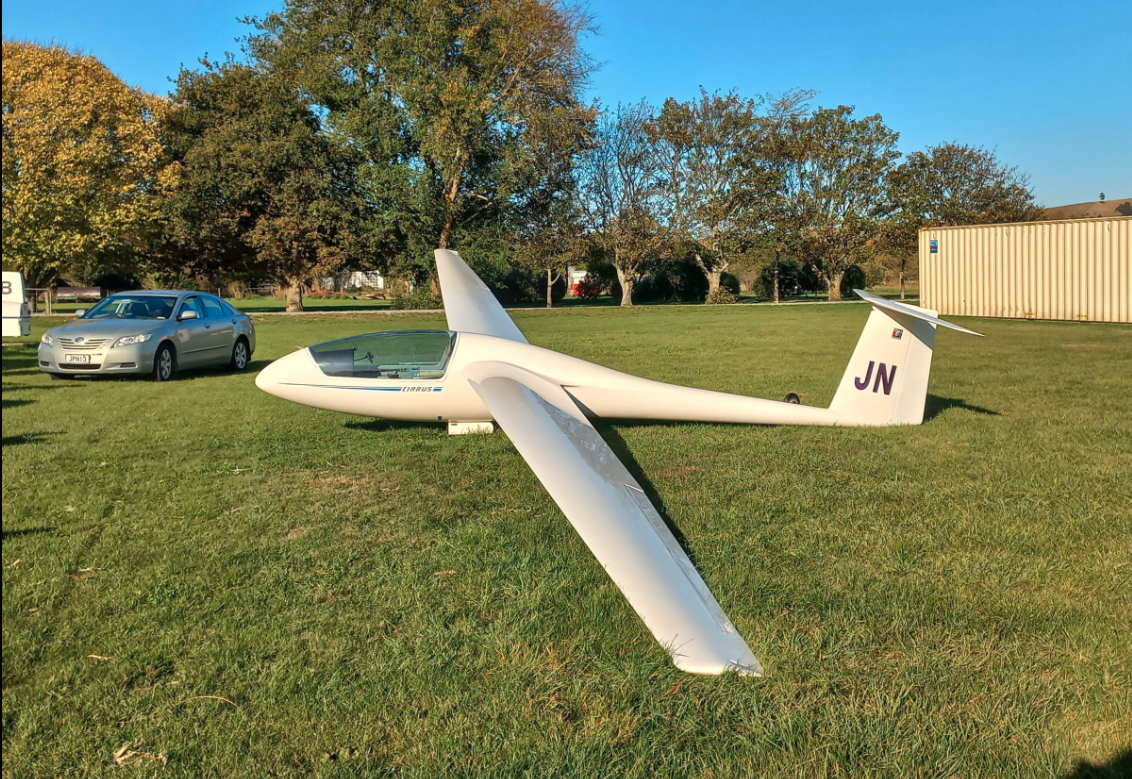
For more gliders and other gliding stuff you can check out the GNZ classifieds at the link below.
Thanks for reading
All contributions, pics, videos and opinions welcome
EMAIL: president@gliding.co.nz